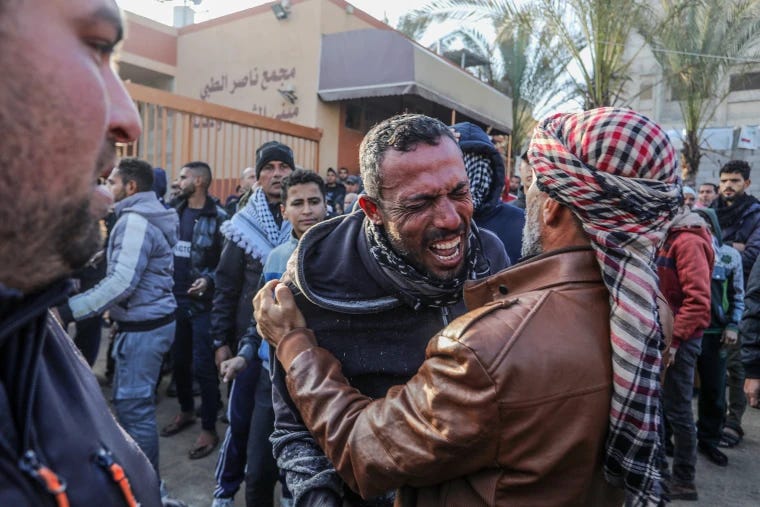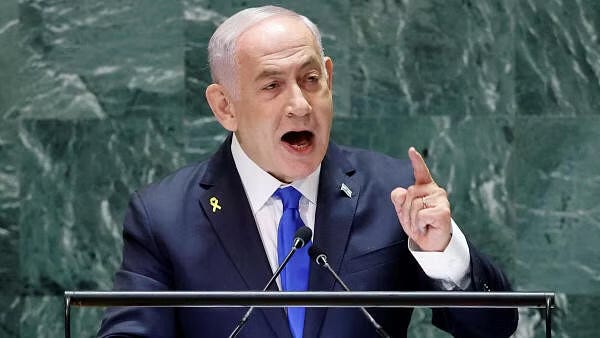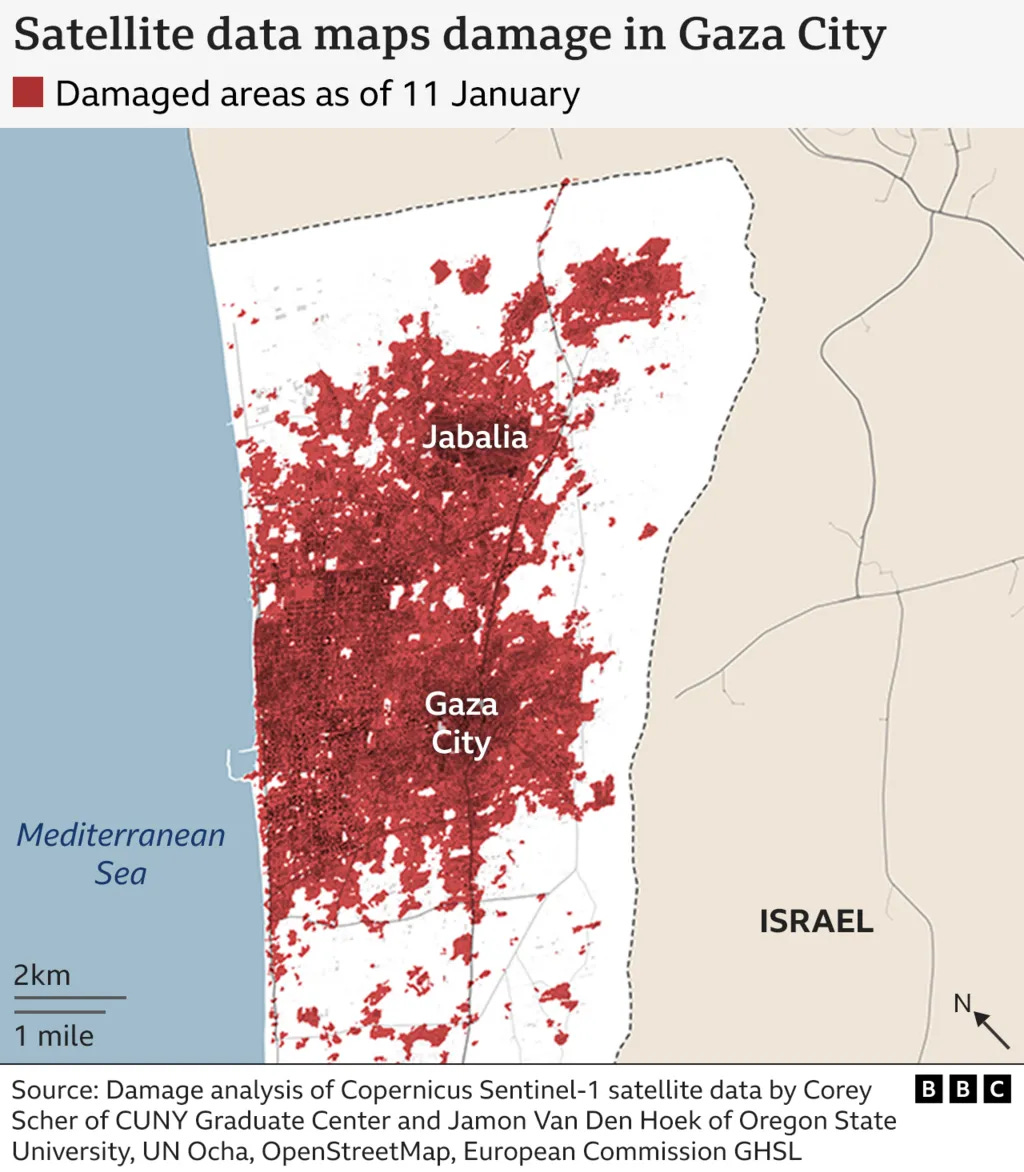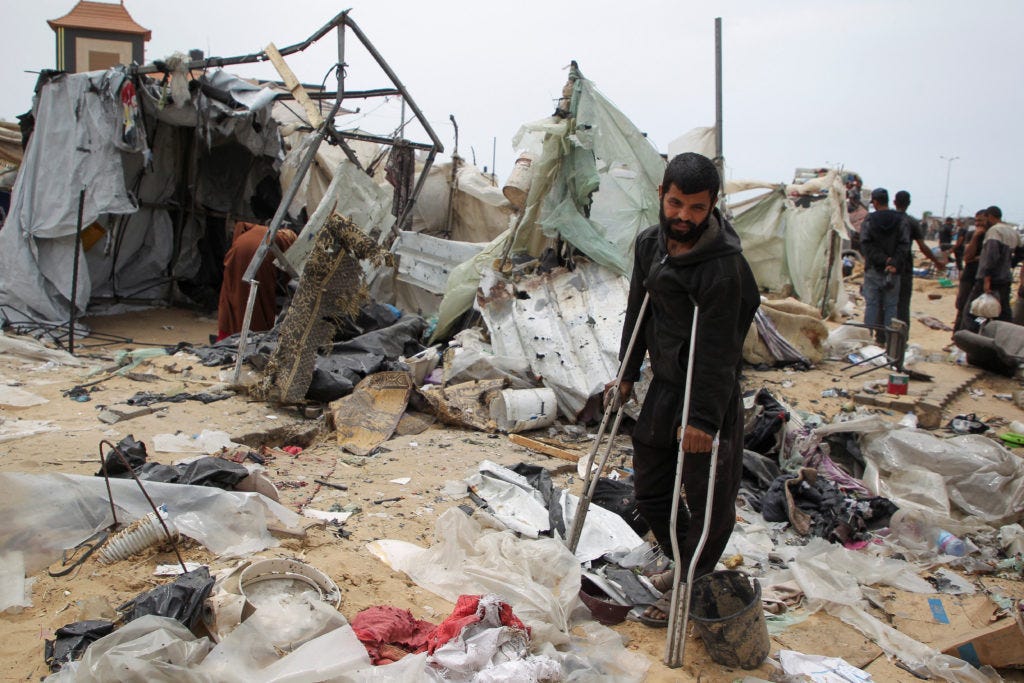Despite A Ceasefire, Israel's Bombs Are Just As Deadly.
In The Wake Of The First Ceasefire In Gaza In Over 400 Days, Israeli Bombs Kill Over 100 Palestinians.

470 days. At least 46,707 dead, 18,000 of which are children. Over 100,000 injured, with 25% of those being life-altering injuries per the World Health Organization (WHO).
Nearly 70% of the Gaza strip destroyed. Almost 19 billion dollars in damage, 300 million of which is to culturally significant infrastructure.
If Gaza had 100 trucks working full-time, it would take 15 years just to clear the rubble.
All this came to an end with the announcement of a long sought after ceasefire agreement between Israel and Hamas.
Or so was thought, but under the surface things don’t seem as quite bright.
The first point of concern is the glaring issues in the deal itself. Notably, Hamas remaining in power. Which keeps authority from being consolidated to one party. Where ideally for Palestinians that would be the Palestinian Authority that current rules in the West Bank.
This not being so only makes normalization and statehood harder to achieve. As well as giving Israel the same excuse to keep up its border policies and other similarly hawkish positions.
Meaning essentially, we’re back where we were on October 6th. Hamas is going to trade off all its hostages, where Israel will then have no incentive to not just go back into a bombing campaign. Especially when the next US Ambassador to Israel is stating publicly that Palestinians shouldn’t have a sovereign state.
Also, our Ambassador to Israel is stating preemptively that Israel still has a right to attack Hamas throughout the ceasefire. Giving them the same justification they’ve used this entire conflict, signalling very little will change.
If they want to carry out an attack, they can just claim it was on Hamas, and no further questions will be asked. Despite them doing this multiple times previously and having to walk it back due to investigations later showing that to not be the case.
Which goes into the other reason the ceasefire deal might not be the shimmering ray of hope many wished it would be. Israel is already continuing attacks in Gaza.
In less than 48 hours from agreeing upon the deal, Israel launched airstrikes into Gaza killing at least 115 people. Of the casualties, 28 were children and 31 were women, marking the deadliest day in Gaza in weeks.
It included a house targeted in Gaza City, where 18 civilians were killed. And a small gathering of civilians in the Bureij refugee camp in the Karaj area. This came as the atmosphere in Gaza one was of celebration, only to be broken up by Israeli drones.
So now it seems completely up in smoke as to what to expect. Neither side trusts the other will stick to its part of the agreement. The US is seemingly signalling full support regardless of Israeli action, likely thanks to Miriam Adelson’s influence over Donald Trump. Bought and paid for influence, might I add.
Where now the best case scenario for Palestinians seems to be a return to how things were on October 6th. Where their material conditions are still horrible, Israel can still get away with the occasional attacks, and everyone is just awaiting tensions to boil over. It’s hardly a true step toward real, lasting peace. Something both parties in the region long-deserve.
Things are still moving forward however, the first phase of the deal officially started today. As Hamas released 3 of the expected 33 hostages and almost 200 aid trucks were allowed in Gaza for the first time in what feels like forever. Regardless of the long-term prospects of this deal, this is something still worth being happy about. It’s been over 400 days since the last ceasefire agreement.
This also shows how diplomacy was always the way to get hostages back, as both times hostages were successfully recovered was due to ceasefires. Not due to relentless bombing.
Hostages on both sides are set to be able to return to their families, as Israel is also expected to release hundreds of Palestinians currently held without charge.
The need for something like this, the surge of humanitarian aid with a halt in the fighting is clearly highlighted in the numbers. As the lancet reported in a peer-reviewed study, its likely the death toll related to traumatic injuries sustained from Israeli attacks in Gaza is likely over 60,000.
The Lancet has also reported deaths connected to the Israeli attacks in Gaza could likely total well over 100,000. From traumatic injury deaths, deaths from sickness, to just those lost under the rubble it’s likely the toll is much higher than the 46,707 currently confirmed.
Match this to reports from Oxfam on how Palestinians are surviving on 12% of the daily recommended calories, less than what is in a single can of beans.
Or how sickness is on the rise, from 67 skin infections to meningitis and other more serious issues.
PTSD and food insecurity are obviously massive problems plaguing Palestinians as well. All of these are reasons any halt in fighting, any allowance of aid into the region, should still be seen as a win.
However small that may be.
The best hope through this is at some point in the three phases of this plan, Palestine can rid of Hamas and power can be transferred completely to the Palestinian Authority. This would completely absolve Palestine of any baggage, and Israel of any excuse to continue the occupation and genocide.
On the Israeli side, we have to hope the international pressure and fact this is now a more mainstream issue keeps them a little more in check with how recklessly they carpet-bomb Gaza. A lot weighs in on how Trump and his cabinet signal they will act throughout this process, which hasn’t gotten off to a good start.
But hope isn’t a word I’ve used about this region in a long time. So just for that being a word in the discourse of Israel-Palestine again isn’t something to shrug off. We just have to hope it lasts.







